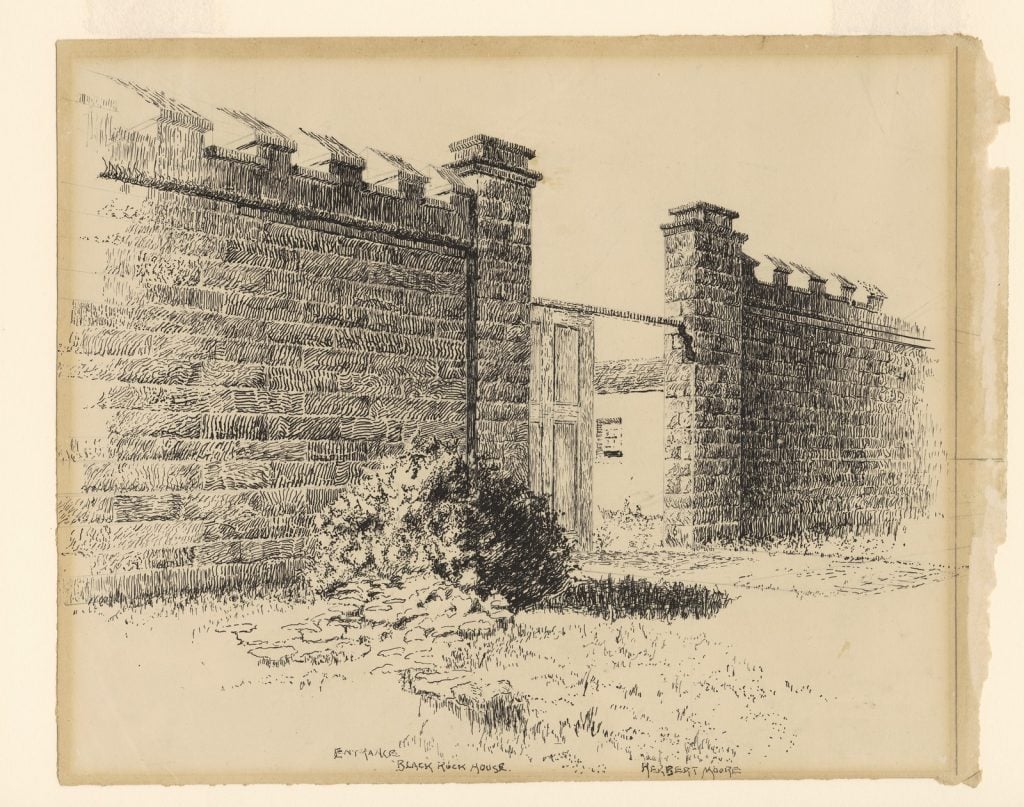
Recently we received a curious enquiry from Bronwen in Black Rock:
When I was a child (a long time ago) there were two spinsters who lived in Black Rock house – I seem to remember that they were the Misses Cullinane. There was a tunnel from the house to a cave on the beach; it was an escape route originally. I was forbidden by my parents to go into the cave as it had once caved in and I think a couple of boys died there…I would like to know more. [1]
I was instantly intrigued by the Dickenson image of these sisters living in the forebodingly named – and quite gothic in my imagination – Black Rock house.
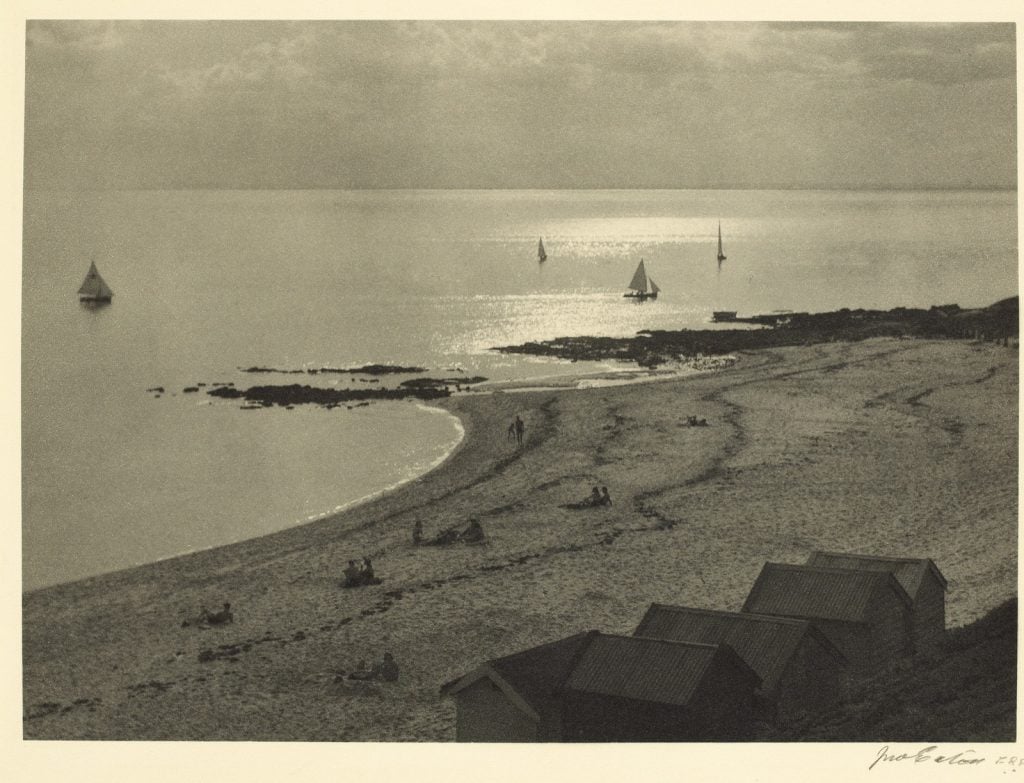

Black Rock took its name from the house built by Charles Hotson Ebden between 1856-1858, itself believed to be named after Black Rock, County Cork, where Ebden spent some of his youth. (The Advocate)
Born in Cape Town, Ebden (1811-1867) was an early Port Phillip pastoralist, businessman and parliamentarian. Having become ‘disgustingly rich’ [2] through these pursuits, he determined to build himself a country home, selecting for himself a site of 122 acres in ‘bush country within sight and sound of the sea’ in traditional Boon wurrung land [3].
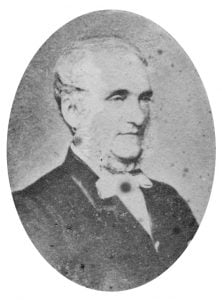
Labour and skilled tradesman were so scarce in Melbourne that the workers earned £1 per day, a luxurious wage for the time. (The Argus) Possibly this labour shortage forced Ebden to compromise on the final design of the homestead, a single storey T-shaped brick and timber house with a cellar, joined by a covered walkway to a stone courtyard and stables. [4] A portion of the house and the castellated wall surrounding it, were built with ‘large blocks of brown stone hewn from the cliffs in the vicinity’. [5]
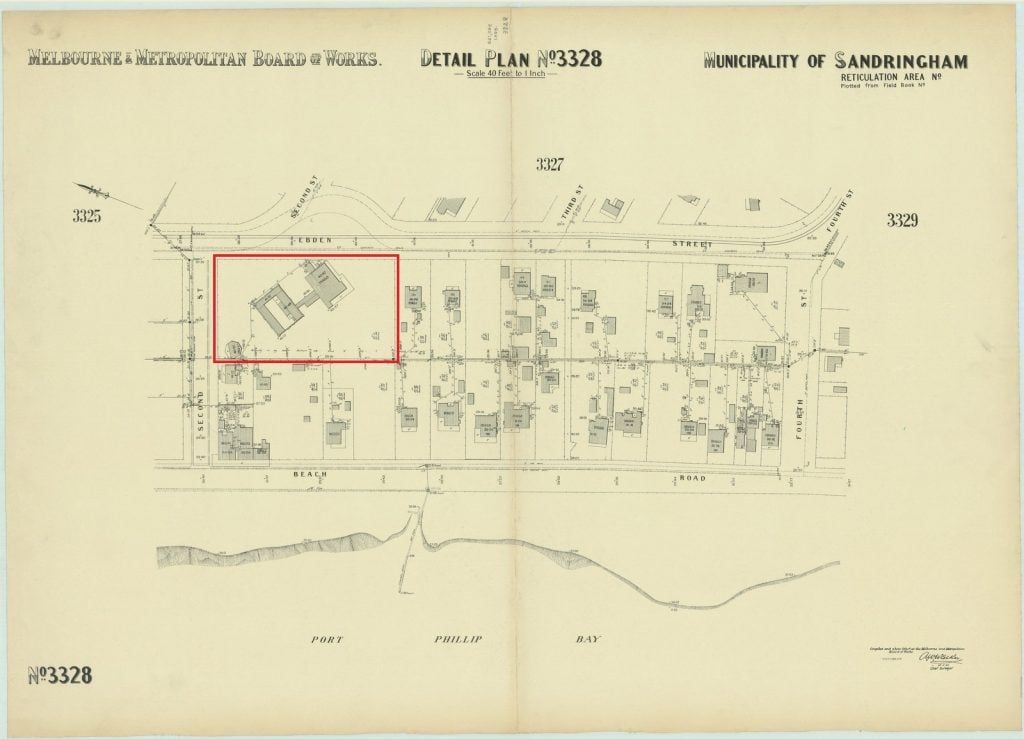
The house – sometimes called Ebden Castle – was for a time a centre of social life for Melbourne’s elite. Governor La Trobe visited frequently for hunting weekends (The Argus), and the doomed explorer William John Wills stopped there on his way to Cooper’s Creek, as did officers of the 40th Regiment prior to their embarkation for India at the time of the Munity in 1857. [6]
Black Rock house remained in the Ebden family until 1910. [7] By the 1920s it had fallen into disrepair, and while inhabited and maintained sporadically, it was under frequent threat of demolition until 1974 when the City of Sandringham (now Bayside City Council) acquired the house. The Friends of Black Rock House formed in 1979 and have been custodians ever since. [8]
The Misses Cullinane – remembered by Bronwen – were daughters of Edward and Mary, who lived at the Black Rock estate as caretakers during the Ebden’s time. These ladies became authorities on the history of Black Rock, and in their twilight years often shared their stories of bygone days with the local newspapers.
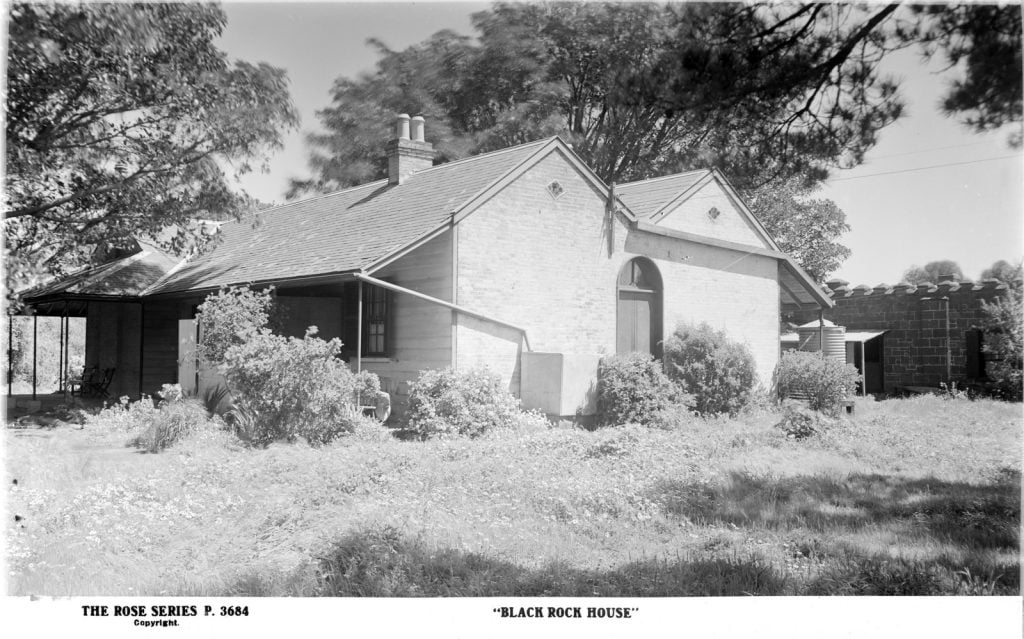
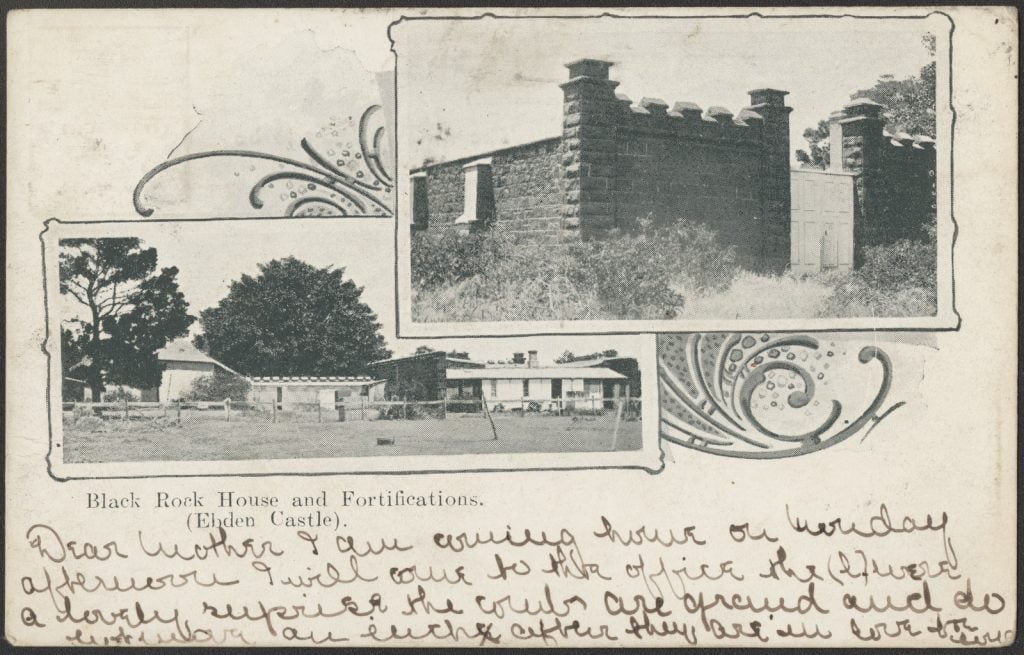
The images the Library holds of Black Rock estate are tantalising fragments which elude a sense of the whole, but what stands out are the medieval ramparts. The house and buildings enclosed, dwarfed by enormous Moreton Bay figs, seem too modest for such steely protection. Why was such a strident example of colonial gothic architecture necessary?
Contrary to some claims that the battlements protected the inhabitants from bushrangers or attacks from the displaced traditional owners of the area, the Boon wurrung peoples, it seems that Ebden took his inspiration from Black Rock Castle in Cork, Ireland (The Argus), and his former home in Cape Town, Belmont House. (The Argus)

Almost since it was built, Black Rock house has inspired fascination, speculation and romantic epithets: ‘There is no building south of the Yarra which has so many stories told about it and with so little foundation in truth as the Black Rock House.’ (Brighton Southern Cross)
The house was said to have been built by escaped convicts from ‘over the way’ (Tasmania). In 1910 the then caretaker was astonished by a ‘bevy of school girls’ asking to visit the ‘Haunted Castle’, which they believed was haunted by the tortured spirit of its previous mistress (Brighton Southern Cross).
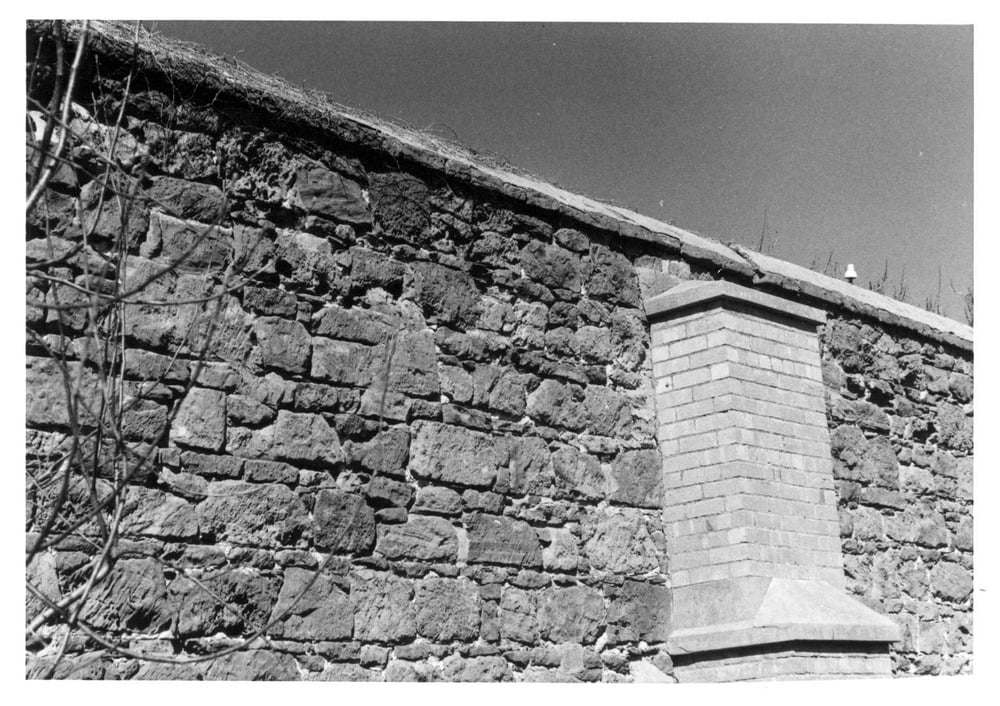
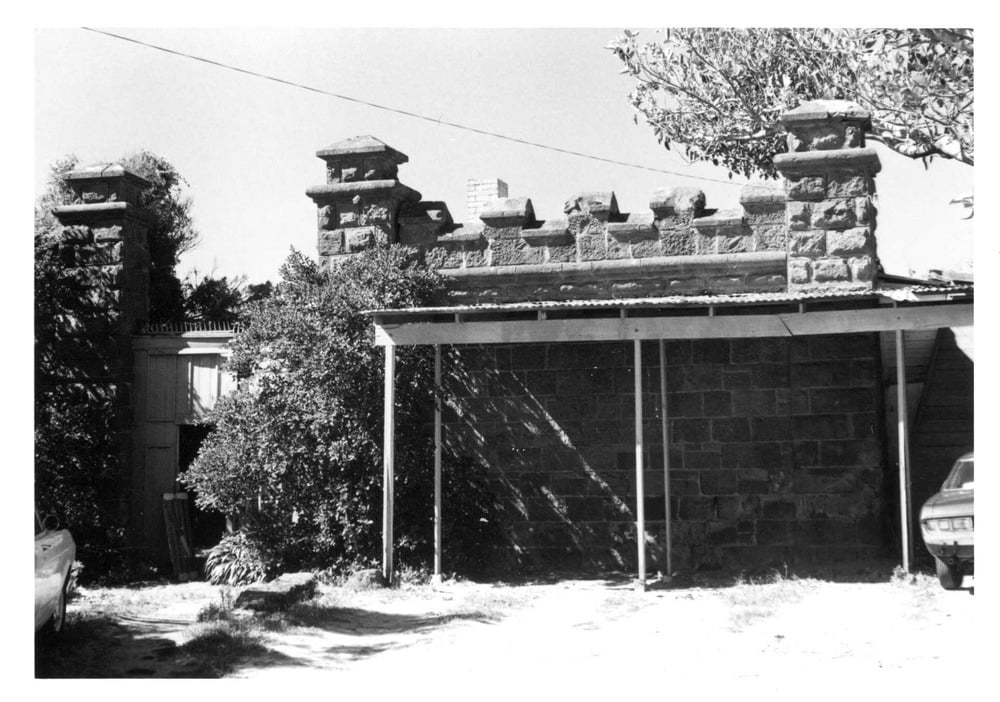
Stories are denied in one decade, revived in another, and at its most hyperbolic and whimsical Black Rock house becomes a stage ready to be populated by all manner of legends both real and imaginary, with ‘bushrangers like Black Douglas [aka Charles Russell] and buccaneers’ lurking in ‘a subterranean passage from the house to the sea in Victor Hugo’s style.’ (The Argus)
That mystique has endured to the present. Nowadays you can go a on ghost tours at Black Rock house.
But what of the tunnel that led to the sea?
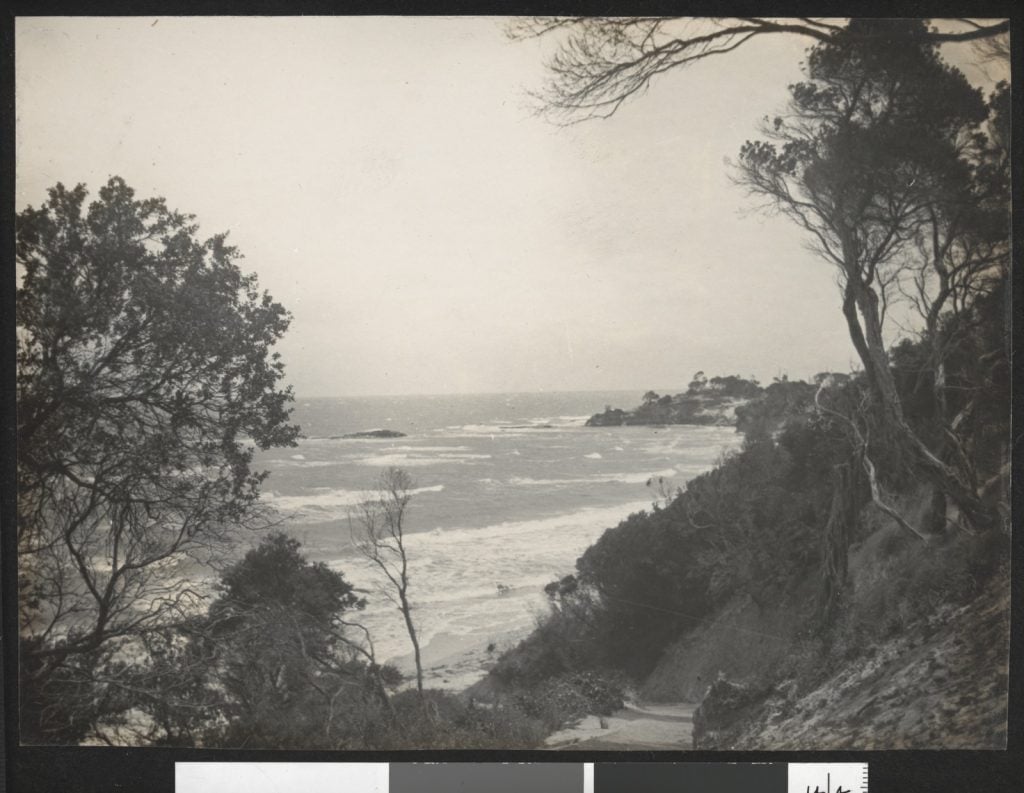
The digitised Trove newspapers rarely disappoint and a search for “Black Rock” and tunnels returned several tantalising references, revealing that people have been arguing about their existence since the early twentieth century.
A popular story in connection with the place was that there were subterranean passages lending from the cellars to the beach, so that goods might be landed without having to pay customs dues. Here rumour again proved unreliable… (Brighton Southern Cross)
The large cellar also remains intact, but there is no evidence of the subterranean passage which was said to have run from it to the beach, about 150 yards away. (The Argus)
…meeting of Black Rock ratepayers last night…Mr. Hughes said the tunnel under the cellar steps led to the foreshore. The end had been blocked up to keep boys out. (The Age)
I did not find any references to accidental drownings specifically connected with Black Rock tunnel in the newspapers, or in death inquest indexes. A Victorian Heritage Council building report states: ‘Small seacave excavated on foreshore to investigate claims of tunnel believed to lead from cellar (disproved).’ [9]
Black Rock house guards its mysteries carefully.
Library patron, David, though, knew the house from his boyhood in the 1950s and remembered the tunnel very vividly. He recalled crawling up the tunnel from the beach side at low tide, not knowing where it ended: ‘The awful stench and the creepiness of the place remains in my memory today.’
He went on to say:
Some time later we were told by locals that the tunnel in fact emanated from Ebden House, I recall from those conversations that the tunnel commenced under a stair well in the house. Large metal plates or a grill covered the tunnel… We then assumed the beach entrance and this tunnel were one of the same. It would appear that over the years beach sand has covered the access. [10]
References
[1] Received as a comment via Picture this: Black Rock
[2] Serle, Geoffrey, 1996, ‘Ebden, Charles Hotson (1811–1867)’, Australian Dictionary of Biography
[3] Black Rock Tourist Association, 1933?, Souvenir Black Rock, Black Rock, Victoria
[4] Victorian Heritage Register entry, ‘Black Rock House’, last updated Jul 2, 2004
[5] Souvenir Black Rock, op cit
[6] As above
[7] Victorian Heritage Register entry, op cit
[9] Victorian Heritage Database Report, ‘Black Rock House’. Graeme Disney and Valerie Tarrant note in their book (referenced below): ‘It seems likely that this tunnel did exist, probably to bring stones up from the beach, but extensive searching of the large cellar beneath the house and the cliff face have so far proved fruitless.’ p.30
[10] Personal correspondence
Further reading
Bayside reflections: history & heritage of Sandringham, Hampton, Black Rock & Beaumaris / Graeme Disney & Valerie Tarrant, 1988, City of Sandringham, Sandringham, Vic
Black Rock House : built for Charles Ebden in 1856, 1983, Sandringham City Council, Sandringham, Vic
The Friends of Black Rock House website: https://www.blackrockhouse.org.au/
LLIFS blog features several articles about the history and legends of Black Rock house



Very interesting to learn about Black Rock. I wonder if David is remembering Brighton Beach Station tunnel?
So well researched and written – love it! Just wondering why there’s no mention of the Cerberus, it was a great landmark and we were so proud of it. My grandparents’ bathing box was the first after going down the ramp to Half Moon Bay, and my Dad (who had been in World War I), often used to swim out to the ship, climb onto it and wave to us. It was the first British-built naval ship to have no sails, but to rely solely on steam power; the first to have rotating gun turrets and, I think, the first ship when our Royal Australian Navy began in 1911. it was sunk as a breakwater at the south end of Half Moon Bay.
Hi Bronwen, so glad you enjoyed the blog. There are so many interesting aspects of Black Rock’s history – the story of the Cerberus sounds like it’s needs a blog all of its own! We have a couple of great images in our collection, eg: http://handle.slv.vic.gov.au/10381/64427. Kind regards, Kylie
Great story Kylie…loved the gothic references in particular…I have never seen the house in person, but my parents live nearby, so would be a good place to walk too.
Thank you Winsome! I haven’t been there either, it’s on the bucket list now 🙂 Kylie
Such a fascinating read about a house I never knew about, and I still want to know more! Congratulations on the research efforts, and subsequent publication.
Thank you Marie-Claire – I’m glad you enjoyed the blog. I felt the same when I was researching the house, many more mysteries to explore! Kind regards, Kylie
Two good references (after COVID, of course) are Friends of Black Rock House and Sandringham and District Historical Society.
Both groups have members with a wealth of knowledge and access to many local resources. SDHS have rooms in Bay Road, Sandringham until they move into the council owned Masonic Lodge in Abbott Street.
Black Rock House is owned by Bayside City Council and maintained accordingly.
Great to read your comments Ray- how are you? Well I hope. Take care old friend- Carolyn Brown x
Great blog Kylie. One of the streets in my town of Kyneton is named after Ebden. There has been calls to change it though as he is implicated in being involved in the massacre of Aboriginal people at Waterloo Plains.
The “Edward” referred to was actually “Edmund” Cullinane, son in law of John O’Neil/l who oversaw the property for Ebden
Ah memories! I remember the Black Rock house tunnel well but never ventured too far in its bowels due to the darkness, humidity and yes as mentioned, rather unpleasant smell. Black Rock house was built out of Black Rock Sandstone quarried in the 1850’s. It seems it si to believe that Black Rock was named after the Castle in Dublin but we always thought it was named because of the sandstone of the same name that lies beneath the orange and yellow, softer sandstone above it. Beautiful place Black Rock, my family lived there from 1963 to 1978 on Beach Road just east of Half Moon Bay. Best memories were tennis at St Joseph’s, dogs on the beach at all hours, bonfire nights in summer (used to burn beach rubbish in the large concrete bins). The luminance along the water’s edge in summer from thousands of bioluminescent creatures. Orange and purple coloured starfish everywhere on the rocks, with my late Mum occasionally collecting mussels. Swimming out to and diving off the Cerberus. I also remember the middens above the white cliffs and there were fossils everywhere. Was a paradise for a young curious child. Does anyone remember the very large black balls that dotted the beach at the base of the white cliffs? Sadly, one by one disappeared, I presume to make garden features. They were fascinating but I can’t find any info on them. A number of years ago I returned with my own family and found only small pieces of the ancient black sandstone. It seems that is all that is left, tiny fragments in the sand. Bit like my memories!
Thank you for sharing Michele! This is the kind of local history that is so hard to capture.